You have no items in your shopping basket.
What are the advantages of using the 70-20-10 learning model?
Unleashing learning potential: Exploring the advantages of the 70-20-10 learning model with The Mandatory Training Group
Timothy Dune
28-05-2024
In today's rapidly evolving workplace, effective learning models are crucial for driving employee development and organisational success. One such model gaining traction is the 70-20-10 learning model, which emphasises experiential, social, and formal learning. In this blog, Timothy Dune will delve into the advantages of adopting this innovative approach and how it can revolutionise learning and development initiatives, in collaboration with The Mandatory Training Group.
Key facts and statistics
- According to research by the Center for Creative Leadership, around 70% of learning occurs through on-the-job experiences, 20% through interactions with others, and 10% through formal training.
- Organisations that embrace the 70-20-10 model experience higher employee engagement and performance, as reported by a study conducted by the Corporate Executive Board.

Image by Rawpixel via Envato Elements

Image by Sorapop via Envato Elements
Benefits of the 70-20-10 approach
The 70-20-10 learning model proposes a framework for understanding how individuals acquire knowledge and skills. According to this model:
- 70% of learning happens through hands-on experiences and real-world challenges.
- 20% of learning occurs through social interactions, such as mentoring, coaching, and collaborative projects.
- 10% of learning results from formal training programs, workshops, and courses.
Advantages of the 70-20-10 learning model
The 70-20-10 learning model offers numerous advantages for individuals and organisations seeking to optimise their learning and development strategies. This approach acknowledges and leverages the diverse ways in which people learn and grow, resulting in several benefits.
Maximising experiential learning opportunities
- Discuss the importance of providing employees with challenging tasks and projects that allow them to learn by doing.
- Highlight the role of stretch assignments, job rotations, and cross-functional projects in fostering skill development and innovation.
Facilitating social learning connections
- Explore how peer learning, mentoring, and communities of practice enable employees to share knowledge, insights, and best practices.
- Showcase the benefits of creating a collaborative learning culture where employees feel empowered to seek guidance and support from their colleagues.
Enhancing formal training effectiveness
- Explain how traditional training programs can be enhanced to align with the principles of the 70-20-10 model, focusing on practical application and interactive learning activities.
- Emphasise the importance of integrating technology-driven solutions, such as e-learning platforms and virtual simulations, to deliver engaging and personalised learning experiences.

Image by CarlosBarquero via Envato Elements

Image by yurakrasil via Envato Elements
Recommendations
- Encourage organisations to assess their current learning and development strategies and identify opportunities to incorporate the 70-20-10 model.
- Advocate for leadership buy-in and support to drive cultural shifts towards a more experiential and collaborative learning environment.
- Suggest leveraging resources and support from reputable organisations such as The Mandatory Training Group, 70:20:10 Institute, ATD, CIPD, LPI, and Corporate Learning Network for guidance and best practices.
Conclusion
In conclusion, the 70-20-10 learning model offers a holistic approach to learning and development that aligns with the dynamic needs of modern workplaces. By embracing experiential, social, and formal learning opportunities, organisations can empower their employees to thrive and adapt in an ever-changing landscape. With the support of industry-leading organisations like The Mandatory Training Group and a commitment to continuous improvement, the journey towards maximising learning potential begins.
Click here to explore our full library of e-learning courses today. If you are looking for packages that cover your business training and compliance needs, click here instead.

Image by Pressmaster via Envato Elements
In today's rapidly evolving workplace, effective learning models are crucial for driving employee development and organisational success. One such model gaining traction is the 70-20-10 learning model, which emphasises experiential, social, and formal learning. In this blog, Timothy Dune will delve into the advantages of adopting this innovative approach and how it can revolutionise learning and development initiatives, in collaboration with The Mandatory Training Group.
Key facts and statistics

Image by Rawpixel via Envato Elements
- According to research by the Center for Creative Leadership, around 70% of learning occurs through on-the-job experiences, 20% through interactions with others, and 10% through formal training.
- Organisations that embrace the 70-20-10 model experience higher employee engagement and performance, as reported by a study conducted by the Corporate Executive Board.
Benefits of the 70-20-10 approach

Image by Sorapop via Envato Elements
The 70-20-10 learning model proposes a framework for understanding how individuals acquire knowledge and skills. According to this model:
- 70% of learning happens through hands-on experiences and real-world challenges.
- 20% of learning occurs through social interactions, such as mentoring, coaching, and collaborative projects.
- 10% of learning results from formal training programs, workshops, and courses.
Advantages of the 70-20-10 learning model

Image by CarlosBarquero via Envato Elements
The 70-20-10 learning model offers numerous advantages for individuals and organisations seeking to optimise their learning and development strategies. This approach acknowledges and leverages the diverse ways in which people learn and grow, resulting in several benefits.
Maximising experiential learning opportunities
- Discuss the importance of providing employees with challenging tasks and projects that allow them to learn by doing.
- Highlight the role of stretch assignments, job rotations, and cross-functional projects in fostering skill development and innovation.
Facilitating social learning connections
- Explore how peer learning, mentoring, and communities of practice enable employees to share knowledge, insights, and best practices.
- Showcase the benefits of creating a collaborative learning culture where employees feel empowered to seek guidance and support from their colleagues.
Enhancing formal training effectiveness
- Explain how traditional training programs can be enhanced to align with the principles of the 70-20-10 model, focusing on practical application and interactive learning activities.
- Emphasise the importance of integrating technology-driven solutions, such as e-learning platforms and virtual simulations, to deliver engaging and personalised learning experiences.
Recommendations

Image by yurakrasil via Envato Elements
- Encourage organisations to assess their current learning and development strategies and identify opportunities to incorporate the 70-20-10 model.
- Advocate for leadership buy-in and support to drive cultural shifts towards a more experiential and collaborative learning environment.
- Suggest leveraging resources and support from reputable organisations such as The Mandatory Training Group, 70:20:10 Institute, ATD, CIPD, LPI, and Corporate Learning Network for guidance and best practices.
Conclusion

Image by Pressmaster via Envato Elements
In conclusion, the 70-20-10 learning model offers a holistic approach to learning and development that aligns with the dynamic needs of modern workplaces. By embracing experiential, social, and formal learning opportunities, organisations can empower their employees to thrive and adapt in an ever-changing landscape. With the support of industry-leading organisations like The Mandatory Training Group and a commitment to continuous improvement, the journey towards maximising learning potential begins.
Click here to explore our full library of e-learning courses today. If you are looking for packages that cover your business training and compliance needs, click here instead.
About the author
Timothy Dune
Tim excels in developing, implementing and evaluating software systems. Collaborating closely with IT, customer relations, and senior management, he deeply understands our client's unique challenges and prospects. Tim is fervently committed to propelling organisations forward through strategic compliance and workforce development.

About the author
Timothy Dune
Tim excels in developing, implementing and evaluating software systems. Collaborating closely with IT, customer relations, and senior management, he deeply understands our client's unique challenges and prospects. Tim is fervently committed to propelling organisations forward through strategic compliance and workforce development.

Related blog articles
View allRelated blog articles
View allContact us
Complete the form below to find out how we can help your organisation with regulatory compliance and governance, statutory and mandatory training, continuous professional development, learning management systems and educational technologies.







